May 16, 2025 | 10:27 GMT +7
May 16, 2025 | 10:27 GMT +7
Hotline: 0913.378.918
May 16, 2025 | 10:27 GMT +7
Hotline: 0913.378.918
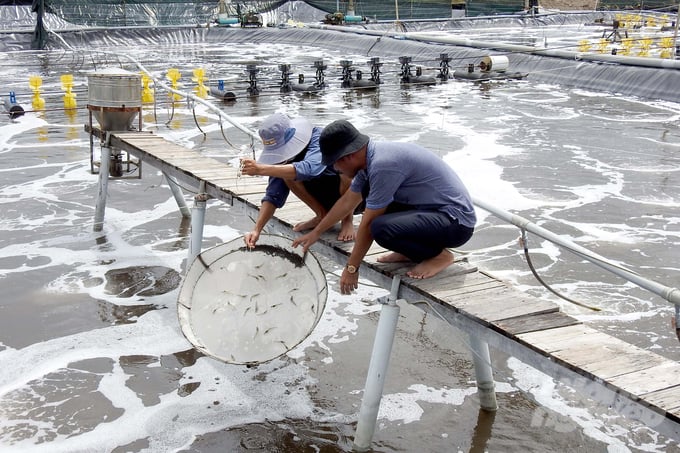
Mr. Luong Van Ha (right) inspects shrimp in a pond using 3-stage CPF-Combine shrimp farming technology. Photo: Son Trang.
Before 2018, Mr. Luong Van Ha had never raised shrimp. But after approaching and learning the 3-stage CPF-Combine shrimp farming technology, Mr. Ha, his brothers, and relatives established a company to raise Whiteleg shrimp according to this model.
Together, they contributed VND 13 billion to invest in building a shrimp farm on 8 hectares in An Ngai commune, Long Dien district, Ba Ria - Vung Tau province. Only 1.3 hectares are spent to build shrimp ponds, and most of the remaining area is to create a system of settling ponds and filtration... The whole process of building and operating the 3-stage CPF-Combine shrimp farming process is under the supervision and regular guidance of C.P. Vietnam's engineers.
Mr. Ha said the water treatment system plays a significant role in the CPF-Combine model the farm is implementing. With this system, the water source, when being put into the pond, is free of harmful bacteria and toxic substances... thereby helping the shrimp to have a safe environment for a favorable development.
In particular, this system is capable of fast water treatment (water treatment input, output straight into the pond) and continuous rotation 24/24 hours. As a result, the system not only always supplies enough water for the pond but also ensures that the water is always safe for the shrimp because when the water has run out of chlorine (used to kill bacteria in the water treatment process), it is immediately supplied to the pond. Cultivation makes algae and bacteria unable to appear, reproduce, and increase again.
Thanks to a safe water source, the source of disease-free shrimp breed of C.P. With a source of high-quality food in Vietnam, Vannamei shrimp farmed in Mr. Ha's farm grows very well, achieving an average yield of 60-70 tons per hectare. After only two crops, Mr. Ha and his brothers recovered all the capital they spent to invest in the farm, which was VND 13 billion.
After more than four years with 15 farming crops, Mr. Ha's farm has succeeded in 14 crops. Only one failure was caused by human carelessness, not by the farming process. Therefore, Mr. Ha will continue to invest to expand the scale of shrimp farming according to the 3-stage CPF-Combine process.
According to Mr. Nguyen Hong Thuan, a representative of C.P. In Vietnam, facing the increasing risks of disease that shrimp farmers face, C.P. Vietnam has researched and developed a 3-stage CPF-Combine process to improve production efficiency for shrimp farmers.
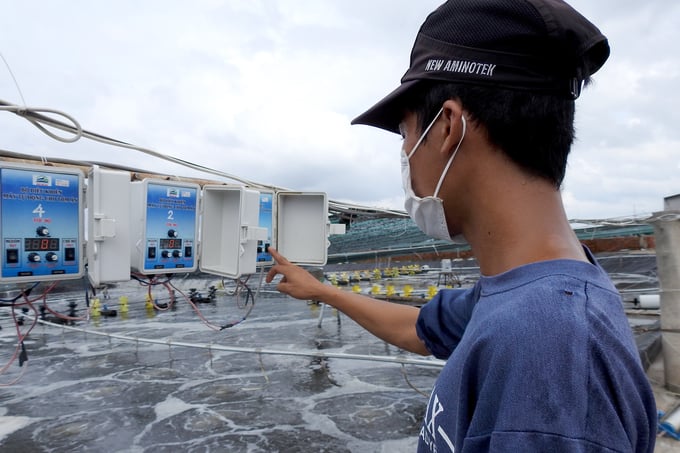
Mr. Luong Van Ha's farm workers operate an automatic machine that feeds shrimp. Photo: Son Trang.
CPF-Combine is a combination of many essential solutions such as biosecurity (using probiotics to prevent intermediate hosts, using microorganisms to control disease), clean farming environment (first source of water, etc.), pond bottom and treated clean), use of disease-free seed and good quality feed.
In particular, 100% of shrimp harvested from the CPF-Combine model can be processed for export because of their good quality and no antibiotic residues. This process has helped farmers minimize the risk of disease outbreaks on shrimp right from the stage of water treatment, seed, and strict control during the rearing process.
Therefore, shrimp farms under this model often have a reasonable selling price, helping farmers to make high profits. Mr. Ha said that the average selling price of shrimp this year is about VND 160,000 per kilogram, while the price is about VND 90,000-100,000.
Not only that, but CPF-Combine also helps farmers to grow white-leg shrimp to a large size (can reach 15 shrimps per kilogram) to have a higher selling price and better profit. Because now, in the face of competitive pressure from a cheap and small-sized white leg from India and Ecuador, Vietnamese shrimp businesses are tending to buy large-sized shrimp for processing and export.
Investing in industrial shrimp farming models, especially super-intensive white-leg shrimp farming, brings high economic efficiency due to good disease management. However, many super-intensive farming households of white-leg have not yet invested in wastewater treatment technology, which also creates inadequacies, especially the discharge of wastewater, which pollutes the environment and affects other farming households.
Hi-tech shrimp farming helps people improve productivity and quality thanks to controlling the entire farming process, especially the water source. Accordingly, the high-tech shrimp farming system combines scientific arrangements between the main pond and auxiliary ponds, such as settling ponds, treatment ponds, preparation ponds, and wastewater treatment systems.
Translated by Ha Phuc
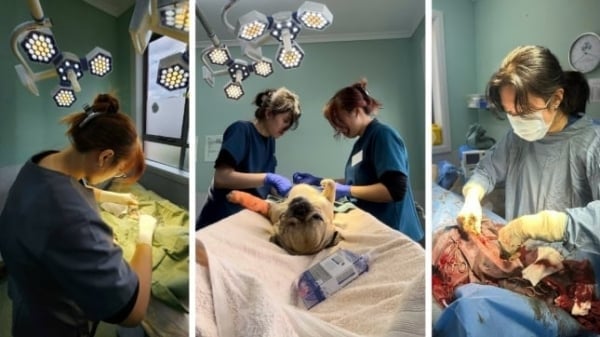
(VAN) Veterinary training should focus on quality, not just quantity. Veterinarians also need more options to pursue specialized training.
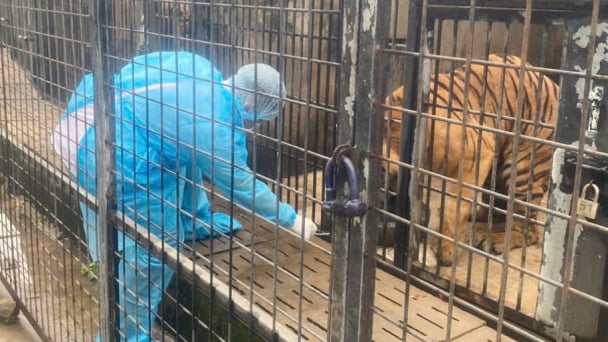
(VAN) The veterinary industry needs to be viewed objectively and further invested in to properly demonstrate its role and importance in the new context.

(VAN) The number of veterinarians graduating each year is not enough to meet actual needs, hence a difficult problem for the growing livestock industry.
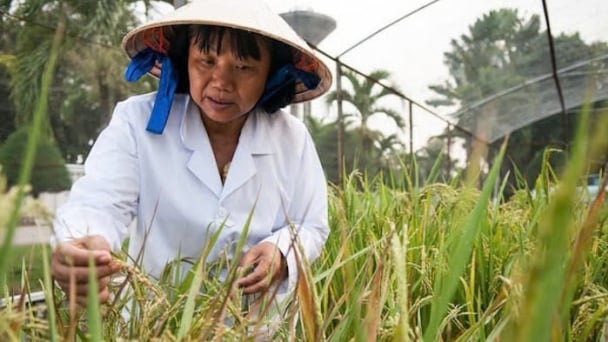
(VAN) The strategic partnership between Cambodia, the Philippines, Vietnam, and CGIAR ensures that innovative solutions effectively address national priorities for food system development.
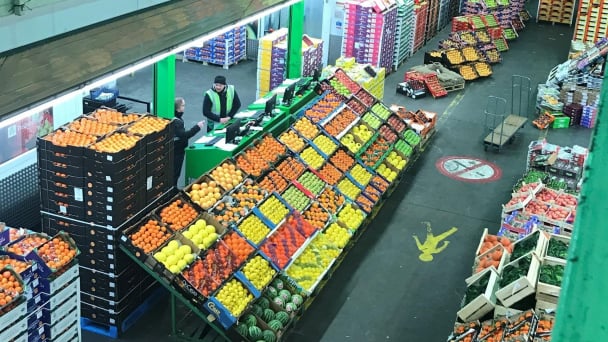
(VAN) This was affirmed by the UK Minister of State at the Department for Environment, Food and Rural Affairs during a working session with Deputy Minister Tran Thanh Nam on May 13.
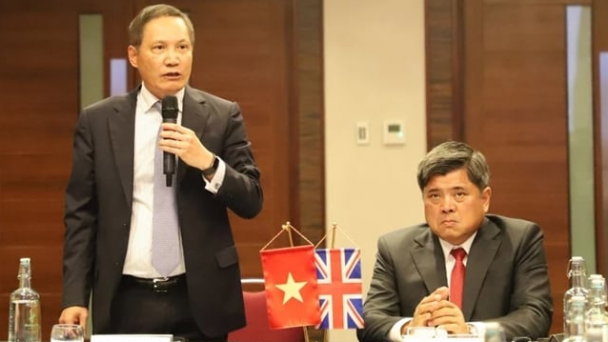
(VAN) On May 13, the Ministry of Agriculture and Environment, in coordination with the Embassy of Vietnam in the United Kingdom, organized a seminar titled 'Connecting trade in Vietnam-UK agricultural, forestry, and fishery products'.
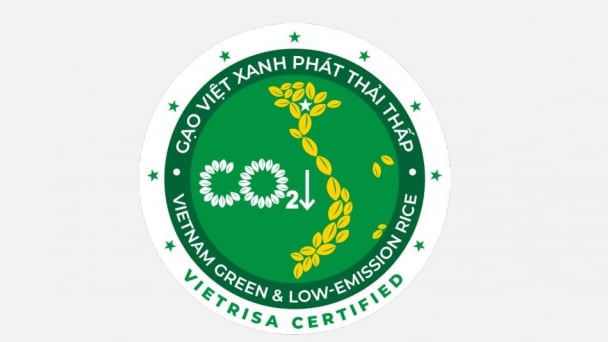
(VAN) The launch of the Vietnam green and low-emission rice brand is a positive signal for both businesses and farmers, marking readiness to reach new heights in the global market.